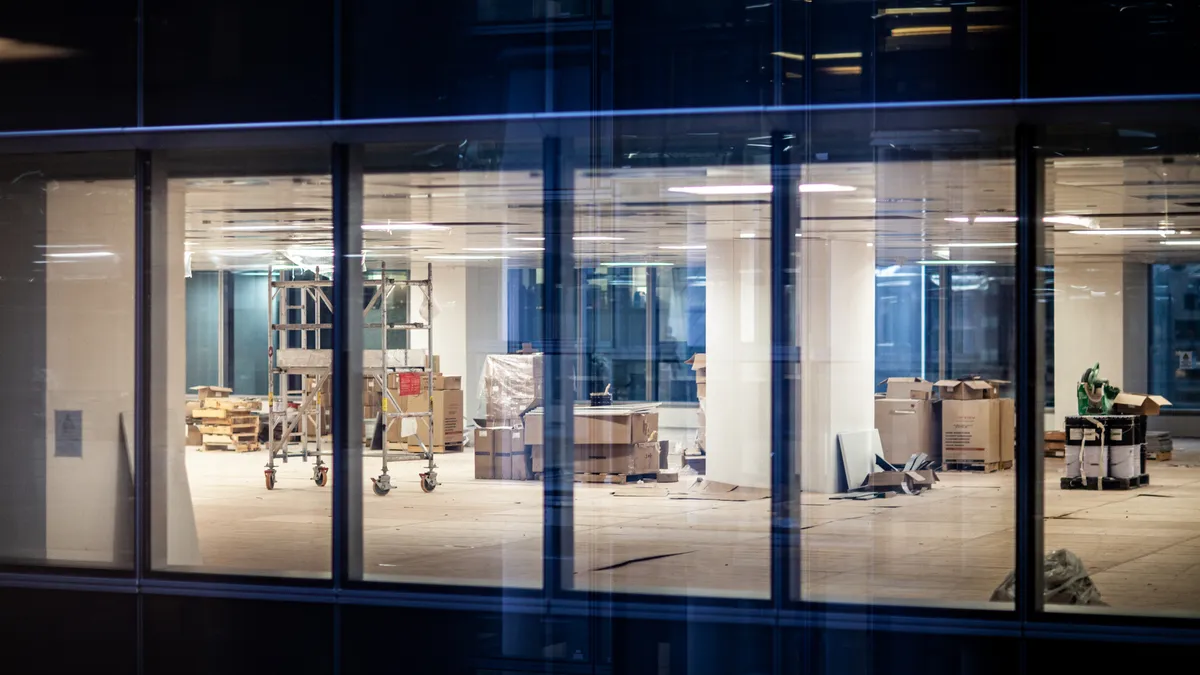People love being near the water. For some, a beach-front home can represent a dream property. In the business world, a port location near shipping channels can be critical, while others invest in waterfront areas by building high-rises, cultural centers and entertainment districts along the water's edge.
But nature has other ideas.
In its "2017 Snow, Water, Ice and Permafrost in the Arctic" (SWIPA) assessment, the Arctic Monitoring and Assessment Programme (AMAP), which monitors the Arctic for effects of climate change and pollution on behalf of the Arctic Council, found the level of sea rise could be much higher than previously estimated.
If the Earth can get close to the carbon emission targets and other benchmarks set in the Paris Agreement, then sea levels will likely rise approximately 20 inches by 2100. If manufacturing, mining, driving and otherwise polluting without regard for the environment continues in the current trajectory, then a rise along the lines of 29 inches is more likely.
However, these numbers represent the low end of what could be an even more catastrophic scenario. According to a January 2017 National Oceanic and Atmospheric Administration report, U.S. coastal areas could face up to a near-7-foot rise in sea level by 2100. That would pose an unprecedented human and economic toll on the 40% of the country's population that lives on or near the water.
Already, sea level rise has added more punch to extreme weather events like Superstorm Sandy, which devastated parts of New York and New Jersey with flooding in 2013. It has also contributed to an increase in "nuisance flooding," which has become 300% to 900% more frequent during the last 50 years.
Now that the writing is on the wall, how can the AEC community mitigate the effects of sea-level rise?
"At the end of the day," said architect Jessica Sheridan, senior associate at Mancini Duffy in New York, "as architects, it's our duty to protect the health, safety and welfare of the general public."
Tactics to approach sea-level rise and its impact on properties
A community approach to sea-level rise, Sheridan said, is important because not only does it help educate those who might know little about the issue, but it also ultimately protects everyone from properties that can become hazards during flood events.
Sometimes it takes a major incident for different groups — including citizens, businesses and governments — to realize they need to be better prepared and change traditional ways of doing things, according to Liz Holland, CEO of Abbell Associates, a real estate management and acquisition firm. And it doesn’t have to be a natural disaster.
In 1992, water entered a crack in a 47-mile network of abandoned underground freight tunnels under Chicago, she said, and "flooded every basement in the Loop." Basements were where most mechanical and electrical systems were kept, but that is no longer the case. That event cost businesses approximately $1 billion.
Architect Michael Liu, principal and vice president of The Architectural Team in Boston, boils sea-level-fighting strategies down to a few options — either keep the water out or design around it.
The typical response scenario, he said, is to build seawalls or other fixed barriers to prevent water intrusion, but unlike the stereotypical utilitarian walls, that approach can result in an aesthetically appealing design. For example, The Architectural Team designed a mixed-use development called Harbor Place, located along the Merrimack River in downtown Haverhill, MA, that features a boardwalk on top of a practical 16-foot-high flood wall.
However, overuse of barriers can start to separate people from the waterfront. "A lot of what we try to do is preserve views to the water as well as pubic access … and it becomes a challenge," Liu said.
Another trend is to approach sea-level rise by using materials that can be easily replaced or are tolerant of water, according to architect Robert Noblett, who works in the Boston office of Behnisch Architekten. For example, he said, moisture resistant drywall can be simply cut out and replaced it if gets wet. Watertight doors and pressure relief valves are also an option for below-grade spaces.
Designers can also create zones in the landscaping where water can accumulate safely and then either recede or be removed later.
For a more natural and elegant approach, living shorelines could play a significant role in easing the effects of sea-level rise as well, according to Liu. These green infrastructure alternatives use vegetation and other natural elements to absorb water during high tides rather than try to hold it back. However, some coastal areas aren't well-suited for this approach.
For existing buildings, Liu said, the smart move is to execute a resilient strategy in stages. For example, moving electrical service up a few floors is a costly undertaking that might have to be postponed while the owner arranges financing for it, but there are short-term, less-expensive alternatives that can keep water out with simple barriers.
And then there are neighborhoods to consider. "It's one thing to make a building itself resilient by elevating the floor levels above anticipated water levels, but I do think that, as a society … we need to start thinking about entire neighborhoods where streets might be underwater," Liu said.
Holland said this is exactly what Miami Beach is doing — raising street levels above projected flood levels. This, she said, has created cozy, below-grade areas that have lent an unusual charm to what can be cookie-cutter retail and dining developments along the roadways. "It's making lemonade out of lemons," she said.
Why everyone has a stake in the issue
Of course, there are those property owners, Holland said, who don't get the message until lenders won't finance certain projects or insurance companies refuse to provide coverage to at-risk properties. In fact, she said, insurance companies are probably in the best position to incentivize change. Without adequate insurance coverage, most commercial undertakings, in any geographic location, are just too risky.
"It's one thing to make a building itself resilient by elevating the floor levels above anticipated water levels, but ... as a society … we need to start thinking about entire neighborhoods where streets might be underwater."
Michael Liu
Principal and vice president of The Architectural Team
Governments have a big role to play here too, according to Holland. Many municipalities require new construction to comply with more aggressive sea-level rise and other anti-flood measures but don't require any action from owners of existing properties as long as they remain unchanged. Los Angeles is a noteworthy exception, however, with new seismic building regulations that require owners of existing properties to shore up their buildings, both wood and concrete.
The city of Boston, Noblett said, mandates that new construction comply with the city's Climate Change Preparedness and Resiliency Checklist. The guide suggests a variety of climate-related best practices, including whether a developer should build to moderate projections (standard developments) or the highest (critical buildings and infrastructure) based on sea-level rise projections through 2100.
A push from government, Noblett said, can be a good thing because while large, sophisticated companies are already designing and planning for sea-level rise, "there will always be those who want to build as cheaply as possible" and then sell the building off a few years later to an unwitting buyer.
Too much regulation, however, can dampen investment, according to Liu, so government must walk a fine line between safety and economic fallout.
The ultimate safeguard might be site selection. "We have discussion with clients about whether or not the site is suitable," Liu said. Sometimes it's a matter of balancing owner interests with community redevelopment goals.
The bottom line, according to Sheridan, is that the design community needs to start working at the advocacy level on the issue of sea-level rise. "Architects and contractors need to be at the table," she said.



















